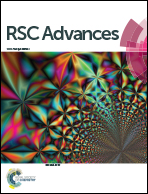17O NMR spectroscopy-assisted in vitro bioactivity studies of the intermediates formed via Na2S and RSNO cross-linking reactions
Abstract
The cross-linking reaction between sulfide and S-nitrosothiol moieties has been intensively investigated and thionitrite/thionitrous acid (SNO−/HSNO) as well as nitrosopersulfide (SSNO−) were reported to be the intermediates that could serve as reservoirs for nitric oxide (NO). However, debate still exists regarding the stability and biological activity of SNO−/HSNO and SSNO−. In order to investigate the chemical properties and biological activity of SNO− and SSNO−, we set out to re-characterize the reaction intermediates using UV-Vis and 15N NMR spectroscopy techniques, as well as a new 17O NMR approach. The effects of SNO− and SSNO− on cellular NO and cGMP levels were assessed via cell culture experiments, and also the effects of SNO− and SSNO− on cell proliferation, migration, and capillary-like structure formation were evaluated with human umbilical vein endothelial cells (HUVEC). Through this work, the characteristic peaks and half-lives of SNO− and SSNO− were elucidated under various preparation conditions. The biological assays demonstrated that SSNO− increased the cellular NO and cGMP levels and also facilitated cell proliferation, migration and stimulated angiogenesis, while in contrast SNO− did not exhibit these effects.



 Please wait while we load your content...
Please wait while we load your content...